Economy
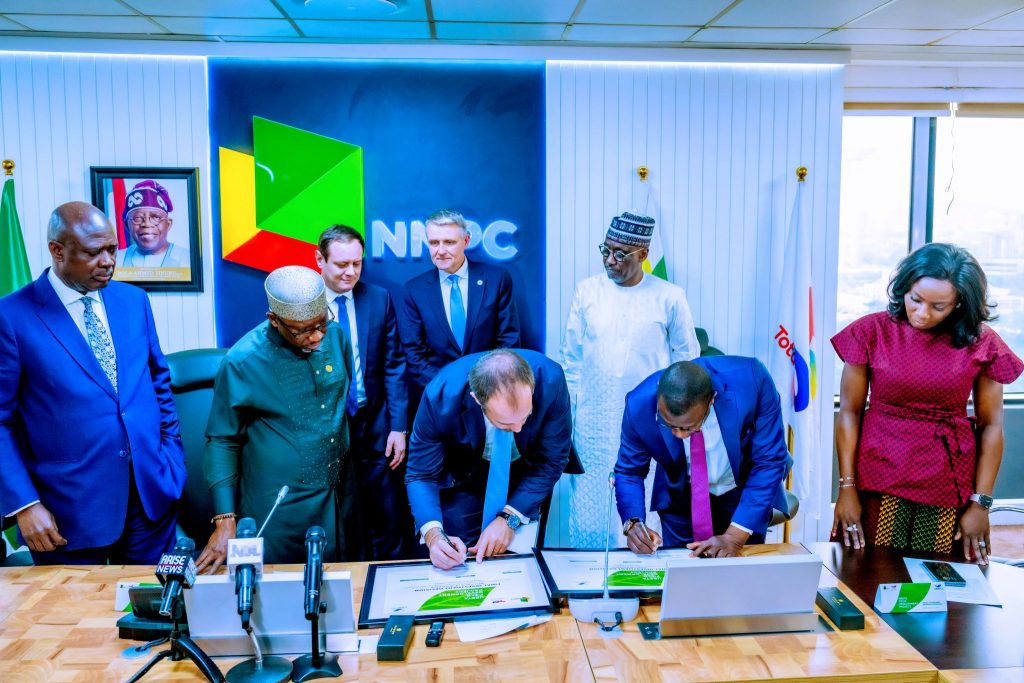
NNPC and TotalEnergies announce $550m investment in Nigeria’s Ubeta Gas Field
The Nigerian National Petroleum Corporation and TotalEnergies have announced a $550 million investment decision for the development of the Ubeta Field, a key onshore gas project expected to provide feedstock to Nigeria LNG – Africa’s biggest LNG export terminal. The project is located within OML 58, a TotalEnergies-operated onshore license that frequently suffers production disruptions due to pipeline vandalism and crude theft. The Ubeta field, discovered in 1964 and located northwest of Port Harcourt in the Niger Delta, is projected to produce about 350 million standard cubic feet (MMscf/d) of gas and 10,000 barrels of associated liquids daily. This development is expected to contribute significantly to the supply for NLNG’s Train 7. “Ubeta is the latest in a series of projects developed by TotalEnergies in Nigeria, most recently Ikike and Akpo West. I am pleased that we can launch this new gas project which has been made possible by the Government’s recent incentives for non-associated gas developments,” TotalEnergies’ Senior Vice President for Africa, Exploration & Production, Mike Sangster, said in a company statement. “Ubeta fits perfectly with our strategy of developing low-cost and low-emission projects, and will contribute to the Nigerian economy through higher NLNG exports.” At the official signing event at NNPC Towers, Group CEO Mele Kyari expressed appreciation for the Tinubu administration’s support in fostering a conducive fiscal environment that has been instrumental in reaching this significant FID. “The Presidential Executive Order is instrumental to us getting to this significant milestone, and we are now seeing the impact of the policy,” Kyari said. Slated for a 2027 start-up, the Ubeta gas condensate field in OML58 will be developed with a six-well cluster connected by pipeline to the existing Obite treatment plant. The development plan includes a 5 MW solar plant and electrification of the drilling rig to reduce carbon intensity. TotalEnergies and NNPC are also focusing on local content, with more than 90% of manhours expected to be worked locally. The Ubeta Field’s FID marks a significant step in NNPC’s ongoing efforts, supported by the executive branch, to address the challenges that have historically hindered foreign investment in Nigeria’s oil and gas industry. The project is expected to stimulate economic growth, create job opportunities, and generate substantial value for various stakeholders.
Read more »
Nigeria targets maritime economy with seaport projects
Nigeria has approved seaport development projects in three states of the country’s southern region as part of push to expand port infrastructure and services that will boost revenue in Africa’s biggest economy. The Federal Executive Council’s approval will allow the development of the Ondo Multi-purpose Port in Ilaje, Ondo State; the expansion of Snake Island Terminal in Lagos State; and the expansion and development of Burutu Seaport in Delta State; all through public-private partnerships (PPP). By 2030, Africa’s Blue Economy, a key priority area of the African Union’s Agenda 2063, is estimated to grow to $405 billion, generating 57 million jobs, according to the African Union. For Nigeria, the development of seaports projects could strengthen its position as a major hub and gateway within Africa’s growing maritime economy. As the Nigeria Ports Authority confirmed the approval of seaport projects in the states of Ondo, Lagos and Delta, the Authority provided insights into what it means for Nigeria and development partners. Ondo Deep Sea Project The Ondo State Government, along with its partners, incorporated the Special Purpose Vehicle (SPV) Port of Ondo Development Limited to design, finance, operate, maintain, and transfer the Ondo Multi-Purpose Deep Sea Port at a total project cost of $1.48 billion. It’ll be fully funded by the proponent for a concession period of 50 years. Projected revenues accruing to the Federal Government are expected run into $50 billion in royalties and other fees in marine services, while the proponent is expected to receive USD $2.6 billion in profits throughout the concession tenor. The Ondo Deep Sea Project will be developed in two phases. Snake Island Port According to the Nigeria Ports Authority, this project would expand the existing port facility from the current single berth to 4 terminals with 3 km of quay, 7 ship berths, and 11 barge berths, with 6 to 13.5 meters of the draft on a total area of 90 hectares. It would comprise container, bulk, and multipurpose (general cargo/RoRo) terminals. The Snake Island Port facility, located within the Snake Island Integrated Free Zone (SIIFZ), would be expanded at a total cost of $974.1 million for a concession period of 45 years. Projected revenues accruing to the Federal Government stand at $18 billion in royalties and marine services, while the proponent is expected to receive $5.23 billion in profits throughout the concession tenor. Burutu Port Project The Burutu Port project in Delta State, proposed by Messrs. Akewa Colmar Services Ltd., has been conceptualized as a mining, inland transportation, logistics base, operating as a transshipment hub for the provision of other port services in western and central Africa. As part of the project, the old port at Burutu will undergo rehabilitation while a greenfield port, proposed for Agge in Delta State, would be developed. The project is estimated to cost $1.2 billion for a concession period of 40 years. Projected revenues accruing to the Federal Government stand at $125 billion in royalties and marine services, while the proponent is expected to earn $9 billion in profits throughout the concession tenor. The project will be developed in three phases. Revamping ports infrastructure for growth and development “These projects are the results of the Federal Government’s drive, through the Federal Ministry of Transportation (FMT) and the Nigerian Ports Authority (NPA), to improve port services, increase revenues, and take pressure off the existing ports and critical infrastructure,” the NPA said in a statement, adding the Infrastructure Concession Regulatory Commission (ICRC) have issued Certificates of Compliance to the port projects. Many of Nigeria’s existing seaports, inherited from the colonial administration, have struggled to function efficiently over the years. But the country is ramping up investments to reverse the trend. At the beginning of this year, Nigeria commissioned the Lekki Deep Seaport, next to the Dangote Refinery, on the east of Lagos. The port, which is the largest in Nigeria, is expected to end cargo congestion in Lagos and cut waiting times offshore.
Read more »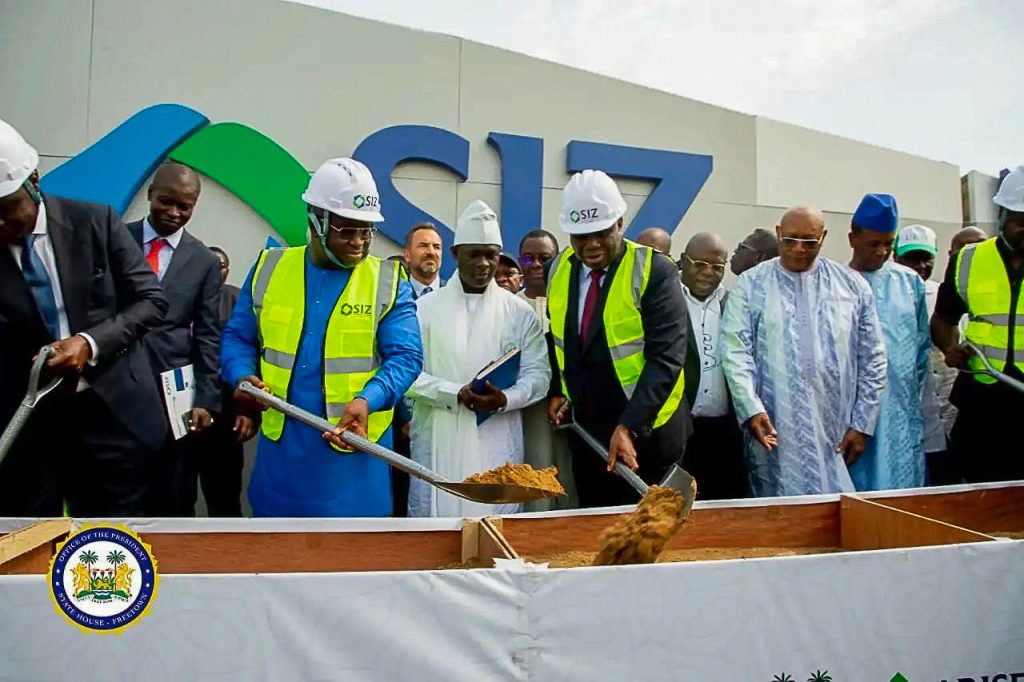
Development partners break ground on new special economic zone in Sierra Leone
ARISE IIP will invest $120m in the development of the SIZ – Koya (Sierra Leone Industrial Zone) as part of a public-private partnership with the Republic of Sierra Leone.
Read more »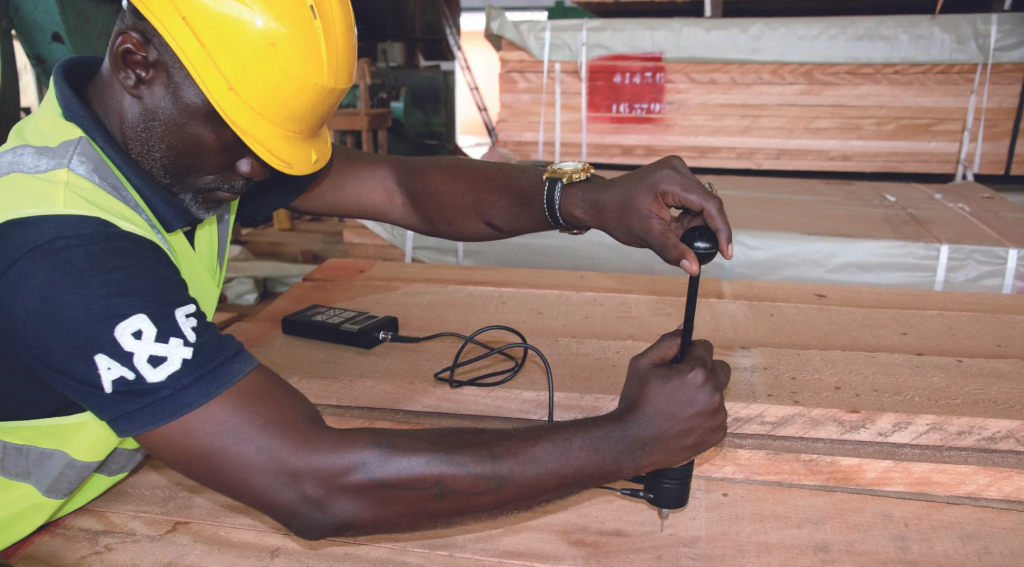
TotalEnergies to develop wood production and carbon sinks in Gabon
TotalEnergies has bought a 49% stake in Compagnie des Bois du Gabon (CBG) from Criterion Africa Partners. In doing so, the French major seeks to develop a forward-looking model of sustainable and responsible forest management that combines sustainable harvesting, biodiversity conservation, and long-term carbon storage. Criterion Africa Partners had entered the capital of CBG back in 2016, supporting the harvesting of 150,000 m3/year of mixed tropical hardwood species and processing logs through the company’s own manufacturing facilities. “CBG’s sawmill produces lumber for both local and export markets, while its rotary veneer plant produces Okoume veneer for The Joubert Group which is Europe’s largest plywood producer,” according to Criterion Africa Partners. “The forest management model applied by the partners will make it possible to develop a new balance between, on the one hand, the harvesting and local processing of sustainable wood combined with carbon storage and, on the other, the production of related carbon credits thanks to the reduced impact of forest operations, reforestation, agroforestry and conservation of natural forests,” TotalEnergies said in a statement. This is not the first such project of the international oil company in Central Africa. In March 2021, TotalEnergies had already announced a partnership with Forêt Ressources Management and the Republic of Congo for the plantation of a 40,000ha forest on the Batéké Plateaux. The new forest will sequester over 10 million tons of CO2 over two decades and will be certified according to the Verified Carbon Standard (VCS) and the Climate, Community & Biodiversity (CCB) standards. The new forest in Congo will also effectively create a carbon sink and support the development of agroforestry practices with the local communities for food production and sustainable wood energy.
Read more »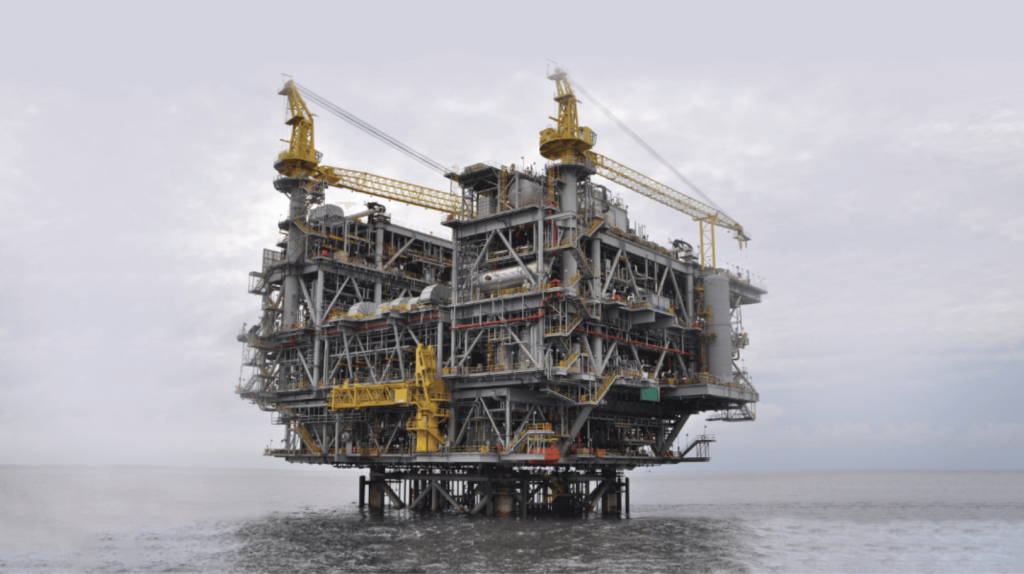
Angola has already surpassed its oil revenue target for 2021
With a new record-high oil revenue in Q3 2021, Angola has collected over Kz 4.2 tn in oil revenue this year so far, data compiled by Hawilti from the country’s Ministry of Finance shows. This is already higher than its oil revenue target of Kz 4.059 tn set within its 2021 budget. “In the first nine months of 2021, Angola had already collected more revenue from oil than it did in twelve months in 2019 and 2020,” said Mickael Vogel, Head of Research at Hawilti. Angola is known for being conservative and realistic in its budget estimates and had set its oil price reference for the year at $39/bbl. In comparison, the Girassol Blend started the year at $55.84/bbl on average in January and stood at over $74/bbl on average in September, according to OPEC data. This explains why despite decreasing output, Angola has posted a strong performance in oil revenue collection this year. Source: Ministry of Finance The country’s total ordinary petroleum receipts comprise of the IRP (petroleum income tax), the IPP (tax on petroleum production), the ITP (tax on petroleum transactions) and additional concessionaire’s revenue. Angola’s ability to meet its oil revenue target notably contrasts with that of Nigeria. Just last week, President Buhari declared that the Federal Government of Nigeria’s share of oil revenue was 51% below target as of July 2021 due to disappointing production levels. However, and despite strong oil revenue collection, Angola’s oil sector continues to underperform due to lack of investments in the past decade. Oil production in 2021 was initially budgeted at an average of 1,220,400 bopd before it was revised down in the middle of the year to 1,193,420 bopd.
Read more »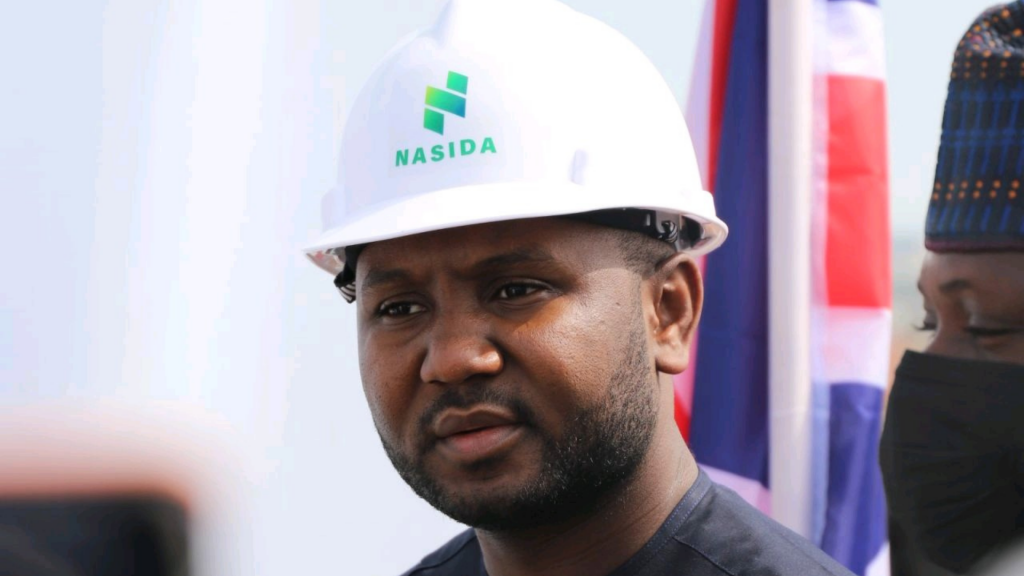
This Nigerian state gets serious about boosting private sector growth
Located just southeast of Nigeria’s capital Abuja, the State of Nasarawa is often overlooked to the benefits of the Federal Capital Territory or bigger industrial states like Kaduna to the north and Kogi to the south. But its government is actively trying to change that and developing new private sector cooperation to boost public infrastructure. In August, its state executive council approved the set-up of five new public-private partnerships (PPPs) to boost development across the state and revitalize its economy. They notably follow the adoption of a new law setting up the Nasarawa Investment & Development Agecy (NASIDA) and concerted efforts to support private sector growth. Chief amongst those projects is the Nasarawa Technology Village in partnership with ABS Blueprint and Modern Shelter. The PPP project integrates housing, technology centers and commercial facilities and echoes a similar venture developed in Abuja, the Abuja Technology Village Science and Technology Park (STP) and Special Economic Zone (SEZ). In transport, the state is pushing ahead with the establishment of the Nasarawa Transport Company to support trade and investment. The initial steps notably rely on the construction of modern bus terminals in various stage of development across the state. Healthcare is another priority with the concession of services offered within the Dalhatu Araf Specialist Hospital in the state capital, Lafia. The operations and maintenance and three key departments within the facility are being given to the private sector, including radiology, laboratory, and mortuary. The Concession Agreement for the Concession of Radiology and Lab Services was signed on September 6th this year with DNA Labs Limited. If successful, this innovative concession model would boost private sector investment in the state’s healthcare system while improving service delivery. Because of their continued fiscal deficits and unstable macroeconomic outlook, most Nigerian states do not qualify to issue sub-national bonds that could support their infrastructure development. As a result, several state governments have been reviewing their legislation to become more competitive and attract private sector investment. The move is seen as encouraging to diversify economic activity beyond Lagos and creating a healthy competition between states.
Read more »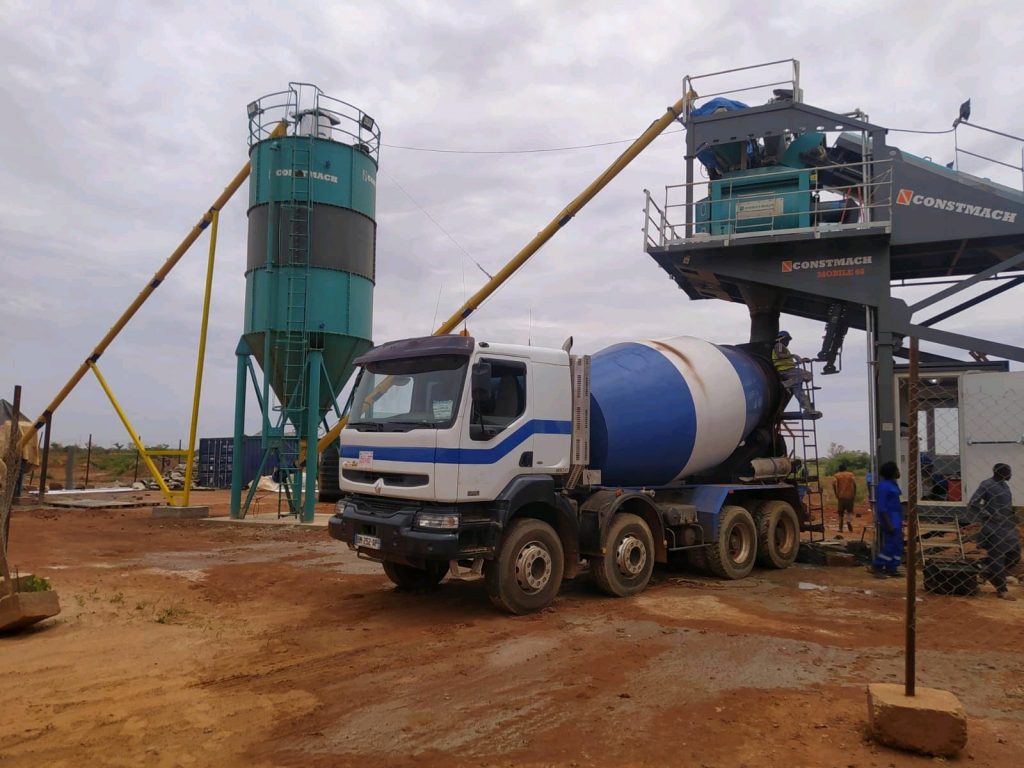
Which African economies will perform in 2022?
Africa will once again be home to some of the world’s fastest-growing economies next year according to the International Monetary Fund (IMF). A total of 11 countries can expect GDP growth levels of 6% or more, including eight in West Africa. Diversified Economies Most performing African markets have in common a relatively diversified economy, at the exception of South Sudan. Non-resource-intensive countries, such as Côte d’Ivoire, and economies with a strong mining sector such as Ghana or Mali, are expected to see robust growth in 2022, driven by a rebound in private consumption and investment as confidence strengthens and exports increase. The fastest-growing African economies also share in common a growing and important agriculture industry. Strong agricultural growth and a faster-than expected recovery in commodity prices has in fact helped many African economies weather the economic storm induced by the COVID-19 pandemic. Infrastructure Spending Infrastructure spending will continue to support growth across the continent, especially in markets with big infrastructure projects such as Niger or Rwanda. Elsewhere like in Ghana and Côte d’Ivoire, economic recovery will translate into growth for the construction industry, especially as governments seek to expand basic infrastructure. Social infrastructure is especially expected to receive a boost following the issuance of historic Eurobonds by Côte d’Ivoire and Benin in 2021, with a specific aim of investing into social and public infrastructure while financing budget deficits. A Strong Potential for Trade Several of the fastest-growing economies on the continent have leveraged on their geographical positions to create strong regional and intraregional trading networks. These are proving extremely useful as Africa rolls out its free-trade area and the bottlenecks created by the Covid19 pandemic ease. Côte d’Ivoire, Ghana and Benin have all positioned themselves as gateway to the rest of West Africa and significantly invested into their ports infrastructure for instance. Efficient value-chains are notably helping to keep inflation down, with Niger, Benin, Senegal and Côte d’Ivoire recording inflation levels of only about 2%. Overall, economic recovery hinges on countries deepening reforms that create jobs, encourage investment, and enhance competitiveness. The resurgence of the pandemic in 2021 and limited additional fiscal support will keep posing an uphill battle for policy makers as they continue to work toward stronger growth and improved livelihoods for their people.
Read more »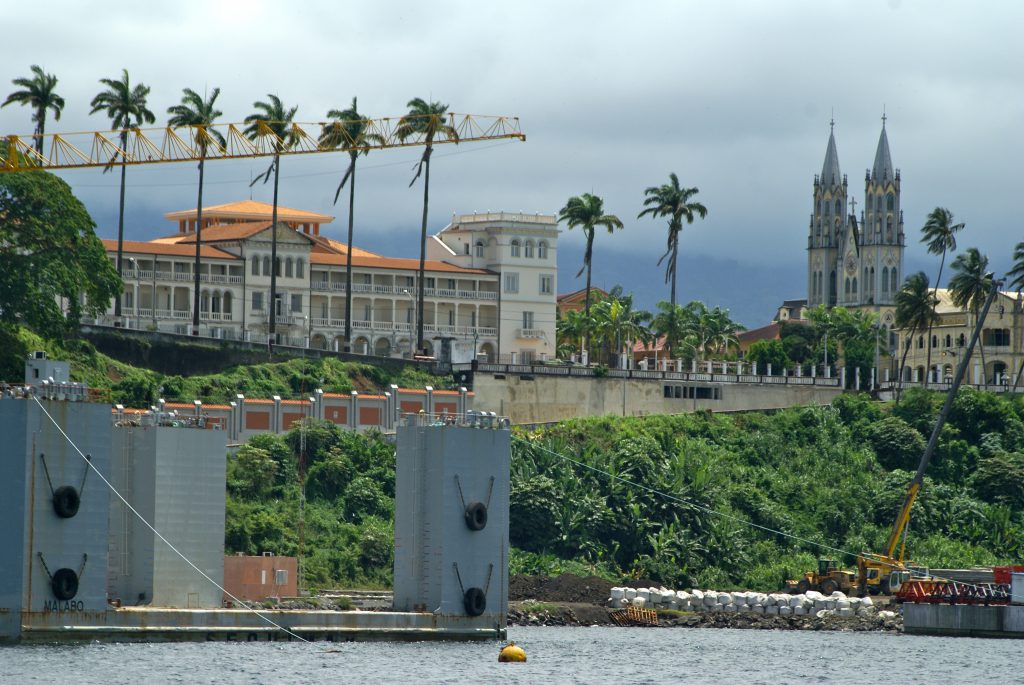
Equatorial Guinea to remain world’s worst performing economy until at least 2026
Equatorial Guinea’s economy will be in recession over the 2022 – 2026 period according to the International Monetary Fund (IMF)’s latest forecast. Not only will it be amongst the very few economies whose GDP does not grow and recover from the Covid-19 pandemic, it will be the world’s worst performing economy for the next five years and the only one in Africa with a negative GDP growth. 2021 will provide some respite for the country, with GDP growth expected at +4% by the IMF and +2.6% by the African Development Bank (AfDB). It will notably be supported by the rebound in oil prices and the completion of the Alen Gas Monetisation project in February 2021. The project has notably established a link between the Chevron-operated Alen Unit and Punta Europa, ensuring new and reliable supply of gas feedstock to Equatorial Guinea’s methanol, LPG and LNG facilities. But progress stops here because Equatorial Guinea should enter a 5-year recession in 2022. Source: IMF How did the country get here? Equatorial Guinea is one of Africa’s least diversified economy and while other oil producers can often rely on their non-oil GDP to support growth during times of market volatility, Equatorial Guinea cannot. In 2020 for instance, non-oil sectors experienced a decline of -4.7% while investment contracted by 35%, according to the AfDB. Equatorial Guinea does not have a strong agriculture sector, has not developed tourism and is yet to exploit its mining and minerals potential in the Rio Muni. While those represent all tremendous investment opportunities, the country’s risk and corruption perception has deterred investors. In the last World Bank’s Ease of Doing Business Index, Equatorial Guinea ranked 178th out of 190th, preceding only the two Congo’s, Chad, the Central African Republic, South Sudan, Libya, Eritrea and Somalia. More importantly, it performed the least in the “starting up a business category”, demonstrating how challenging its business climate remains for entrepreneurs and new investors. Overall, the country’s main risk factor, beyond the persistence of the pandemic, remains the lack of diversification of its oil-based economy. To this, one must add the structural weakness of inadequate human capital due to under-investment in education and the overall skilling of the population. But the real unexploited potential remains that of its natural resources sector. Equatorial Guinea reached its peak production of oil & gas back in 2005 and all its producing fields are maturing and have been onstream for decades. They include Alba (1991), Zafiro (1996), Ceiba (2000), Okume (2006), Aseng (2011) and Alen (2013). Put simply, Equatorial Guinea has not developed a new major oil & gas project in a decade. As a result, output keeps declining and currently stands at just over 150,000 barrels per day (bpd) including 100,000 barrels of oil and the rest of gas and condensate. This makes the country sub-Saharan Africa’s 7th producer only, after Nigeria, Angola, Congo, Gabon, Ghana, and South Sudan. Equatorial Guinea’s under-performance in developing its hydrocarbons sector is not for lack of potential, far from it. It is rather the result of missed opportunities throughout the past decade. In 2007, the country became sub-Saharan Africa’s second LNG exporter with the opening of the 3.7 mtpa EG LNG export terminal. The one-train facility was supposed to be immediately expanded with a second train: portions of the front-end engineering and design had been completed by the time train 1 was commissioned and a final investment decision (FID) was expected as early as 2008. It never happened. Another major opportunity to develop the country’s rich gas reserves came with the development of the Fortuna, Tonel and Vsicata fields on former Block-R via a 2.2 million tonnes per annum (mtpa) floating LNG unit. Ophir Energy and Golar LNG were expected to commission the project in 2019 but failed to secure financing, leading the government to strip Ophir of its license over Block R (now renamed Block EG-27). While LUKOIL won the acreage in the 2019 bidding round, a formal license is yet to be awarded. Meanwhile, several other FLNG projects have made progress around the continent, including in Mozambique, Senegal, Mauritania, and Nigeria. But the oil sector too has had its bunch of missed opportunities. EG Ronda 2019 did manage to attract the interest of some regional and global players, but delays in awarding licenses and signing PSCs have left bidders discouraged. Meanwhile, ExxonMobil has sought to divest from the giant Zafiro oilfield for a few years, but any potential transaction has been stuck in political considerations or blocked by a government that has become too picky, according to industry sources. Trident Energy, the independent that successfully took over the operatorship of the Okume and Ceiba complex from Hess in 2017, has repeatedly expressed its interest in buying ExxonMobil’s 71% stake in Zafiro. The company has demonstrated its ability to successfully operate brownfield assets but was constantly blocked in its bid to take over the asset. As a result, the field that once produced over 200,000 bpd is now producing well under 100,000 bpd. Last year, ExxonMobil’s net production from Zafiro stood at 31,000 bopd against 53,000 bopd a decade ago. Unless significant strides are made on projects like the Fortuna FLNG, the expansion of downstream gas infrastructure and the redevelopment of producing assets, the IMF’s negative growth forecast is very likely to materialize. Equatorial Guinea has the resource base, geographical location and experience to turn into a significant downstream oil and gas hub in the Gulf of Guinea. But while the ongoing development of the offshore gas megahub is promising, it would need to happen a lot faster and reach the extent where the pooling of stranded offshore gas does more than just maintain nameplate output at Punta Europa. The Alba Plant already exports significant amount of LPG to West and Central Africa, where most markets are hungry for LPG and experiencing LPG demand growth rates or 20% of more. But a new LNG train could also be constructed at EG LNG while additional downstream industries such as
Read more »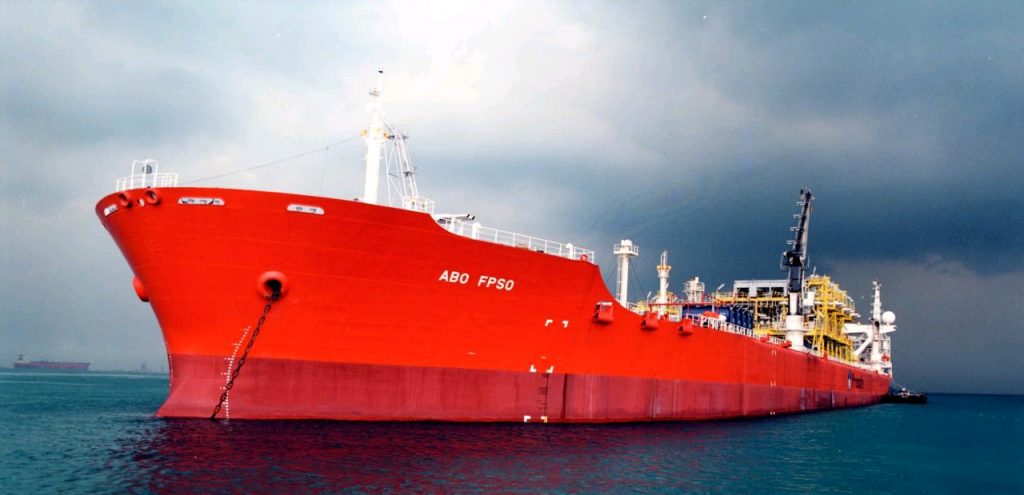
African Oil Producers Have Missed on Over $29bn of Oil Revenue Since January
By and large, 2021 has been a missed opportunity for African oil producers. While the continent’s hydrocarbons sector yielded several discoveries and Nigeria finally signed its landmark Petroleum Industry Bill into law, decreasing output across the board means that African producers have not maximised benefits from the strong rebound in commodity prices. This is particularly the case with sub-Saharan Africa’s three biggest oil producers Nigeria, Angola and the Republic of Congo. Despite OPEC quotas increasing, and leaving room to ramp domestic production back up, the three countries have been unable to pump more barrels. In fact, the difference between their allocated OPEC production quotas and their actual production reached as much as 548,000 barrels per day in August this year. From January to October 2021, the three countries have missed on over $29bn worth of oil production according to Hawilti’s research and estimates. Volumes differentials between OPEC quotas and actual production increased to 30,000 bopd for Congo in August. They are even more significant for Nigeria and Angola, especially at a time when their oil prices reference is high: Nigerian and Angolan oil prices stood constantly above $70/bbl between July and September 2021. Both the Girassol Blend and Bonny Light were selling at an average of over $80/bbl in August. Source: OPEC Nigeria’s oil sector has been massively underperforming this year so far. Its oil GDP was down -12.65% in Q2 2021, its fifth consecutive negative quarter. Despite setting an oil price benchmark of $40/barrel in its 2021 budget, the country is also failing to meet its oil revenue target. Between January and May 2021, gross oil revenue stood at NGN 1,490.76 bn against a pro-rata target of over NGN 2,000 bn. Because of its inability to increase production, Nigeria is very likely to miss its yearly gross oil & gas revenue target of NGN 5,185.57 bn. Reasons abound, but chief amongst them is the lack of investment, especially from international oil companies (IOCs) in the Niger Delta, where the focus for the past decade has primarily been on divesting. Meanwhile, new local operators who have taken over critical onshore assets have been left cash strapped by the double oil price crash of 2014-2016 and 2020. Coupled with aging infrastructure, continued insecurity and repeated vandalism on pipelines, Nigeria’s oil production is simply unable to meet the needs of the hour. The declaration of Force Majeure by Shell at the Forcados oil terminal in August only aggravated the situation, with the country loosing 2.6m barrels of production between July and August 2021. Production and export figures from the country’s five IOCs-operated onshore oil terminals are the most representative of Nigeria’s current situation. While the Bonny, Brass, Qua Iboe, Forcados and Escravos terminals pumped about 165.5m barrels in H1 2020, volumes were down below 130m barrels in H1 this year according to data from the Department of Petroleum Resources (DPR). Source: Department of Petroleum Resources Hopes are that the newly signed Petroleum Industry Act will both lead to the development of undeveloped deep-water discoveries by IOCs while unlocking fresh capital into brownfield opportunities with local operators onshore and in shallow water. Hawilti’s research on M&A deals in the country’s hydrocarbons sector suggests investors are increasingly looking at brownfield investments in the region, at a time when several key local operators are looking at farm-in, technical and capital partners. Meanwhile, Angola also continues to suffer from under-investment in the past decade even though the outlook for its oil & gas sector is positive. Recent fields put into production such as Zinia 2 in May and Cuica in July have done very little to reverse production decline and the country had to revise its yearly production target down to 1,193,420 bpd this year. However, Angola had already met its oil revenue target for the year by the end of Q3, with Kz 4,200 bn already collected in the first nine months of the year against a yearly target of Kz 4,059.4 bn. The country’s short and medium-term outlook is also positive because IOCs have been extremely responsive to the bold policy moves of the Lourenço administration. Most majors operating in the country have already approved new projects, especially subsea tie-backs, infill drilling and marginal fields developments ventures. Those will be supporting production in the short-term, while three new FPSO-based production hubs are in the making by TotalEnergies, Eni and BP.
Read more »
Kenya is positioning itself as Africa’s next big financial hub
Kenya’s capital, Nairobi, has successfully established itself as a regional hub for trade, commerce, innovation and technology. Now, it wants to compete with Mauritius or even Dubai to be Africa’s new financial hub, positioning itself as a global gateway for capital flowing into Africa’s rapidly growing economies. The country launched this year the Nairobi International Financial Center (NIFC) to deepen Africa’s financial sector, with a target of raising $2bn in investments by 2030. The project has been in the making since 2014 and joins a series of ambitious Kenyan ventures supporting the country’s competitiveness, including the Konza Technopolis. The project received a major boost last July during Kenyan President Uhuru Kenyatta’s visit to the United Kingdom. The visit resulted in the announcement of GBP 132m of UK investment into Kenya and marked the official launch of the NIFC in formal partnership with the City of London. British insurer Prudential notably submitted its application to be the first company to set up in the NIFC while Kenyan mining company Mayflower Gold announced plans to dual list its shares on both the London and Nairobi Stock Exchanges in a deal worth £14 million. The deal ALSO includes closer links between the London and Nairobi stock exchanges, as well as moves to ease incorporation and registration of companies in Kenya. While Kenya’s capital markets are relatively developed, the country’s businesses and economy at large still relies massively on commercial debt from banks. The launch of the NIFC is seen as an additional mechanism to promote the Nairobi Stock Exchange while contributing to the deepening of the region’s capital markets.
Read more »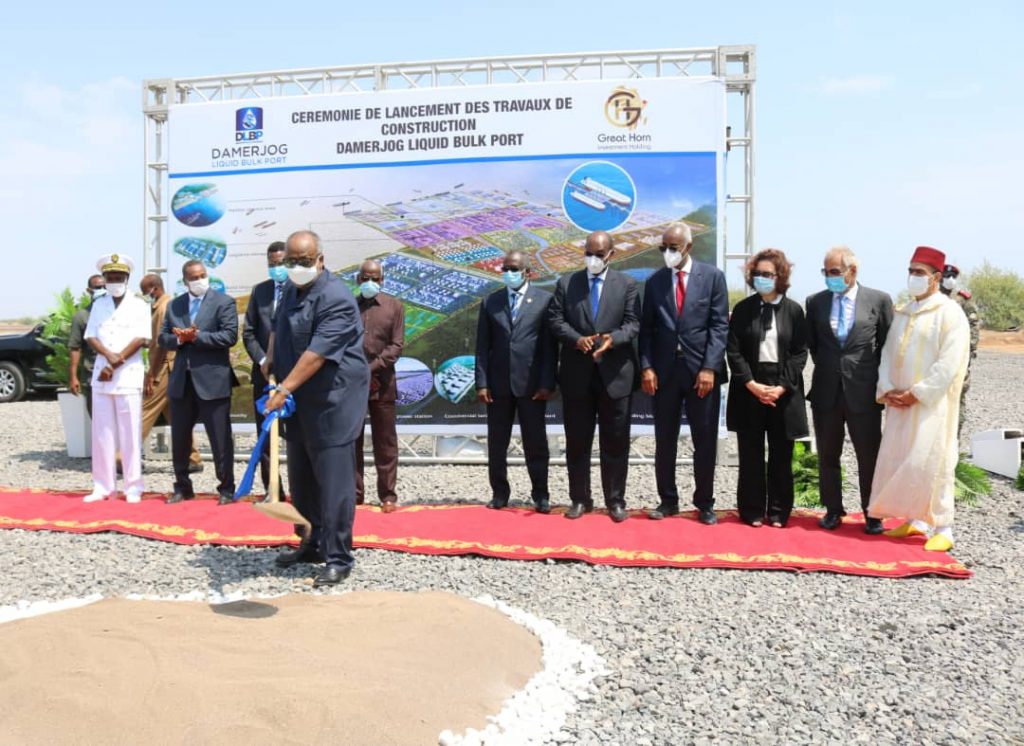
Despite Lack of Natural Resources, Djibouti Attracts Major Investments in Infrastructure
Djibouti has no natural resources, a land area of only 23,200 km2 and a population of 1m. Yet, the country has attracted billions of dollars of investments over the past decade, making some of Africa’s biggest economies look up to it with envy. Foreign investors from China, the Middle East and the United States are injecting billions into the country’s ports, oil & gas terminals, free trade zones and a 750km rail line that serves Ethiopia’s population of over 110m. That railway line alone can carry 2,600 tonnes of wheat and fertilisers and 110 containers per trip. At a time when African countries continue to decry the lack of investment into the continent’s infrastructure, Djibouti is forging ahead and using its geographical location to build the trade and services infrastructure of tomorrow. Geography is the country’s biggest asset: Djibouti is located on the strait of Bab-el-Mandeb on the north-east edge of Africa, where 30% of the world’s shipping passes on its way to the Suez Canal. Coupled with political and economic stability, Djibouti offers investors a safe haven to tap into the world’s most dynamic globalization routes while serving Africa’s growing population. It also helps that its neighbours Eritrea and Somalia continue to be plagued with insecurity and instability. Djibouti’s ports and container terminals remain amongst the most productive in the world. According to a new global container port performance index compiled by the World Bank and IHS Markit, its port is even the most efficient in Africa measured by minutes per container move. With such efficiency, Djibouti’s goal of emulating Singapore as a leading maritime trading hub is within reach. To cement its position as the world’s future big trading hub, Djibouti recently set up a sovereign wealth fund with a view to finance about $1.5bn of domestic business activity over the next decade. In parallel, the country has embarked on significant infrastructure expansion with the Djibouti Damerjog Industrial Development Free Zone, echoing Singapore’s own Jurong petroleum and petrochemicals hub. The industrial park represents a 15-year undertaking and is expected to house integrated energy and petrochemicals facilities and further position the country as a strategic energy and industrial hub meeting the needs of the East African sub-region. While the complex was initially conceptualised to export South Sudanese oil, it eventually developed into a mega industrial and petrochemicals scheme. The ultimate oil complex will cover 80ha, starting with the development of 32ha comprising of 300 000 m3 storage tanks, an oil jetty and railway infrastructure connected to the Nagad Station, and from there to the Djibouti-Addis Abebe railway line. It will also include the construction of a 6 million tonnes refinery by the China Marine Bunker Co. Ltd (CHIMBUSCO) that will refine Saudi and Sudanese crude into marine fuels with a sulphur content of no more than 0.50%S, along with diesel, naphtha and LPG. The facility would primarily meet demand for Djibouti and Ethiopia and be followed by the construction of an onshore refinery. The industrial park will also benefit from a 150MW gas-to-power plant, starting with a 20MW hybrid power station expected to be commissioned in 2022. Such power supply will be key for all upcoming manufacturing units in the park built by Chinese investors and including steel, metal mesh, PVC pipes and glass. The anchor project for the whole complex is the Damerjog Liquid Bulk Port, Djibouti’s seventh port, built by Moroccon contractor SOMAGEC. President of Djibouti Ismaïl Omar Guelleh laid the foundation stone there in September 2020. Details on the Damerjog industrial park and liquid bulk terminal can be found in the “Projects” section within your Hawilti+ research terminal.
Read more »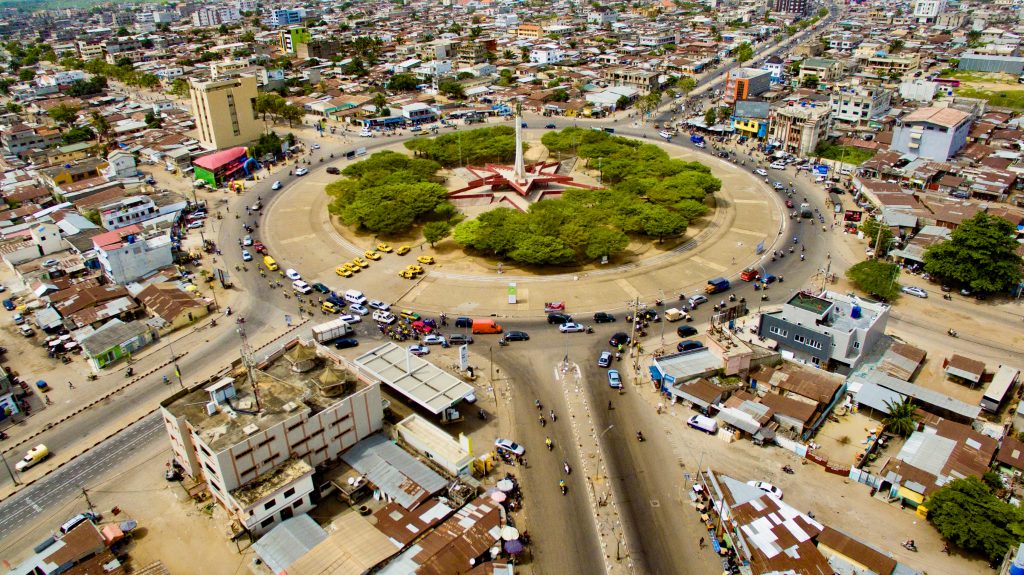
In 6 Months, Benin Has Raised Over 10% of its GDP in Eurobonds
In January, Benin had kicked off Africa’s financial year with a historic €1bn Eurobond issuance split in two tranches. In July, it continued to tap global capital markets and became Africa’s first nation to issue an SDG-link Eurobond that raised another €500m. In total, the small country of 12m people, often overshadowed by its big neighbour Nigeria, managed to raise a historic €1.5bn, representing over 10% of its GDP. A Well Executed Fundraising Programme At the start of the year, Benin already made headlines with its double issuance of €700m (11-year tenor) and €300m (31-year tenor), which it raised at rates of only 4.875% and 6.875% respectively. Both issuances were massively oversubscribed by 300% and mobilized a total of €3bn, demonstrating significant appetite from global investors for Africa’s debt, even that of smaller and often under-estimated nations. While smaller, the €500m issuance of July is nonetheless historic because it represents Africa’s first Eurobond dedicated to the financing of projects linked to the Sustainable Development Goals (SDGs). Once again, it was massively oversubscribed and mobilized a total of €1.2bn. The bond has a very good rate of 5.25% and a tenor of 12.5 years. Benin Builds Investors’ Confidence Shortly after the January issuance, Fitch Ratings revised the outlook on Benin’s long-term foreign-currency Issuer Default Rating (IDR) from stable to positive and affirmed the IDR at ‘B’. Moody’s Investor Service followed in March by upgrading the Government of Benin’s long-term issuer and senior unsecured debt ratings from B2 to B1. Both upgrades were made on the back of strong fiscal consolidation track record, recognized efforts in debt restructuring and rising economic resilience. Benin remains one of Africa’s fastest-growing economies with GDP growth projected at 5% by the IMF this year, and at 5.6% by Fitch Ratings. The medium-term growth prospects are event better with a projected GDP growth rate of over 6% a year over the 2022-2026 period (IMF). What are the Pitfalls? Benin’s latest issuance shows a growing recognition of the benefits of sustainable borrowing from African governments. While Nigeria had been the first African market to issue a sovereign green bond back in 2017, no African nation had yet issued an SDG-link Eurobond. But overall, the country’s Eurobond borrowing strategy also reflects Africa’s growing appetite for external and foreign-currency debt, supported by interest rates often more attractive than on the domestic market. While several countries have seen the debt-to-GDP ratios soar in recent years, Benin’s outstanding public debt is only at about 46.1% of GDP according to 2020 data from the African Development Bank (AfDB). It is expected to average 40.9% of GDP over 2021–22, well below the 70% threshold set by the West African Economic and Monetary Union. As a result, the risk of debt distress remains moderate in the short-term, providing Benin continues to strengthen its domestic resources mobilization, broaden its tax base and diversify its sources of revenue. African markets have raised a significant amount of foreign-currency debt this year. Beside Benin, Côte d’Ivoire notably issued a €850m Eurobond in February (4.3%, 12-year) while Kenya raised $1bn in June by issuing a 12-year Eurobond at 6.3%. All these issuances were massively oversubscribed, further signaling investors’ confidence in the continent’s growth prospects. The last few months of the year will tell if other countries are able to surf on the same wave or not: on October 11th, Nigeria is notably tapping global markets with a Eurobond issuance expected to raise up to $3bn.
Read more »